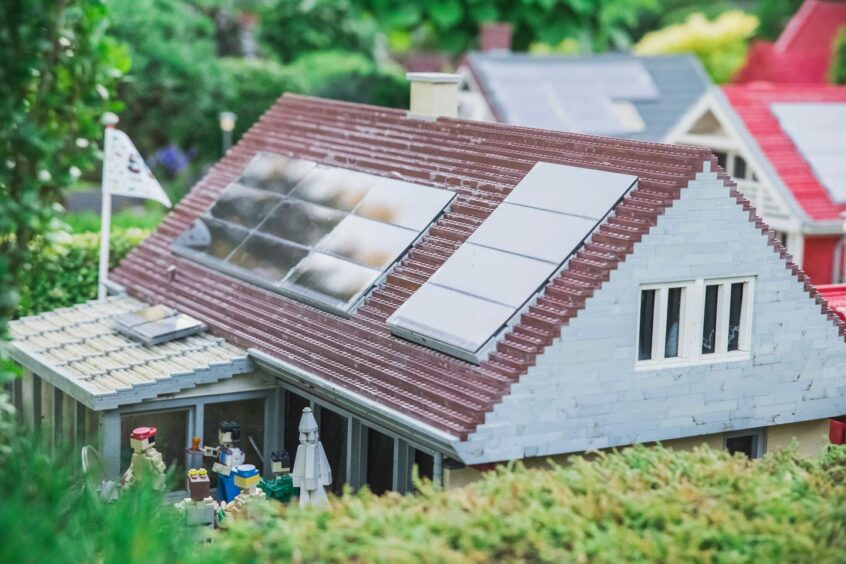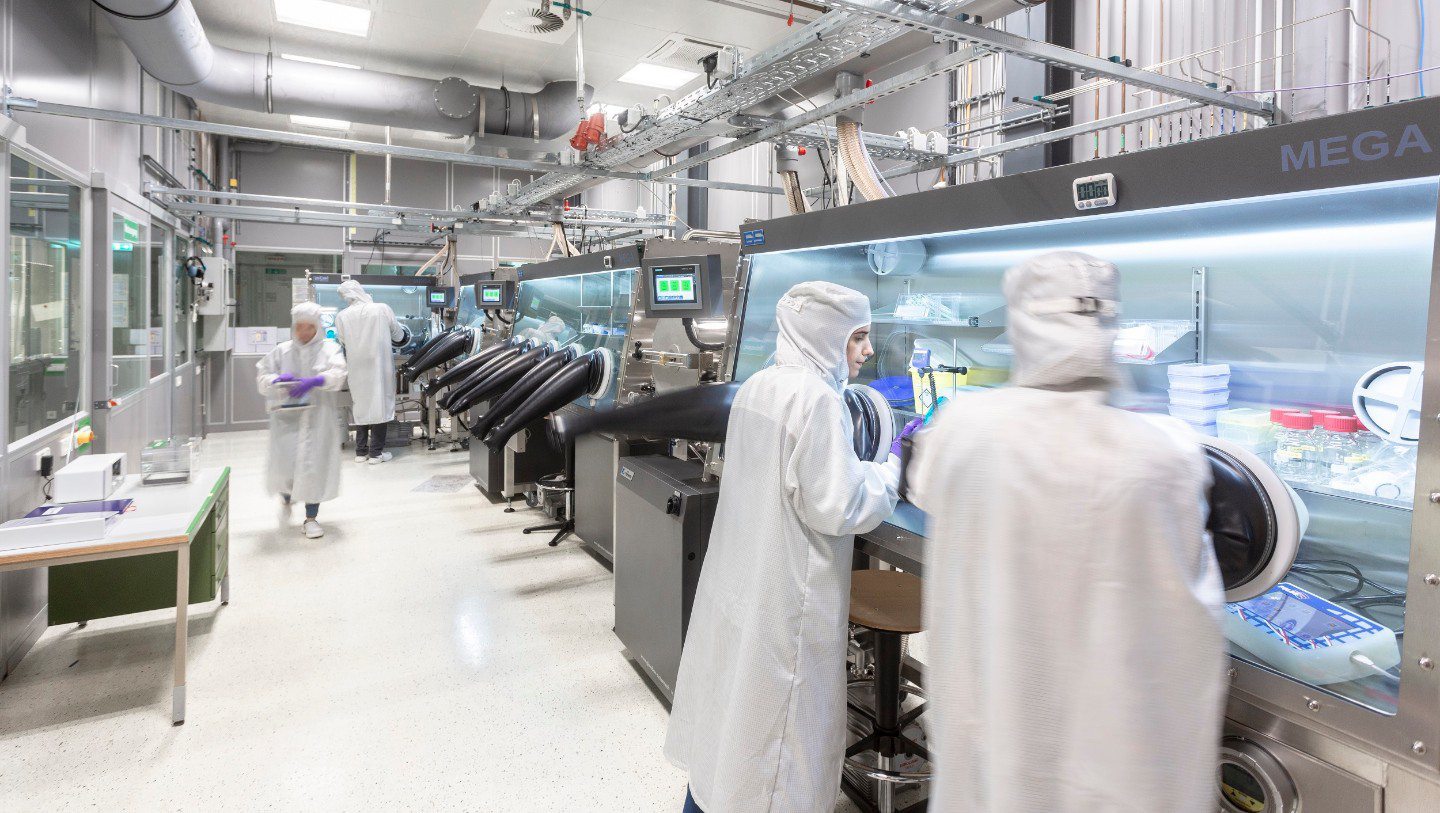
The race to develop the next generation of super-efficient solar panels has just taken a huge step forward with the Swiss top-end technologies group Meyer Burger forging strategic partnerships designed to pave the way to commercialising perovskite-based systems.
Together with CSEM (also from Switzerland), Helmholtz-Zentrum Berlin (HZB), the Fraunhofer Institute for Solar Energy Systems ISE in Freiburg, and the Institute of Photovoltaics at the University of Stuttgart, the company is working on the industrialisation of “perovskite tandem technology”, which is expected to allow the industrial production of solar cells with efficiencies greater than 30%.
Meyer Burger’s plan is to mass produce silicon-based perovskite cells in-house together with appropriate solar modules with Meyer Burger’s proprietary SmartWire connection technology.
In a nutshell, perovskites are today regarded as a new class of semiconductors that emit and absorb light across the entire visible and infrared range. Their commercial potential is staggering.
The work with the new consortium is based on existing collaborations focused on the development of “heterojunction” silicon solar cells. This is where two different technologies are married into one cell in order to enhance efficiency.
But there’s a downside that has to be eliminated.
Compared to silicon, perovskites can degrade rapidly in real world conditions, with exposure to heat and moisture causing damage and negatively impacting device performance.
Solving these stability issues is the key challenge for perovskites in the quest to compete against, or “boost” silicon via a tandem architecture, and grab market share.
Meyer Burger has various collaborations to research perovskite technology under its belt, including with Oxford PV, which was named a winner of the Innovative Technology category at the 23rd UK Energy Institute Awards this year.
While perovskite technology represents a key milestone on Meyer Burger’s innovation roadmap; there is hot competition from around the globe.
In September 2015, Energy Voice reported that US scientists had identified a mineral originally located in the 1800s that could transform the economics and sustainability of the resource-hungry silicon-based solar panels currently in use. This calcium titanate mineral was discovered in Russia’s Ural Mountains by Gustav Rosein in 1839 and is named after Russian mineralogist Lev Perovski.
In 2015, scientists were already claiming that (now conventional) silicon-based panels generally needed about two years to achieve pay-back to the investor. But for panels made with perovskites, they calculated payback could be achieved within two to three months.
This wasn’t a commercial claim but the outcome of research by American researchers at Northwestern University and the US Department of Energy’s Argonne National Laboratory.
There were early successes in the UK too at that time, with Sheffield University scientists pioneering the use of perovskites to create a PV device by using a spray painting technique to coat the substrate.
In fact, efficient organometal halide perovskite-based photovoltaics were apparently first demonstrated in 2012.
Meyer Burger has already notched up some early-stage industrialisation successes. For example, with CSEM, it has achieved a record efficiency of 29.6 percent for a 25 sq.cm perovskite tandem solar cell.
“Although we still have a lot of work ahead of us, the industrialisation of solar cells with an efficiency of over 30% is on the right track,” says Professor Christophe Ballif, director of sustainable energy at CSEM.
HZB has achieved record, world-leading efficiencies in excess of 31% for laboratory tandem solar cells in combination with heterojunction and perovskite.
Now, in collaboration with Meyer Burger and its partners, HZB is to apply the results to the manufacturing of commercial products in industry.
By manufacturing in Europe, Meyer Burger is planning on creating high-quality jobs and achieving early market domination of this hottest evolution in PV technologies.
The Institute for Photovoltaics at the University of Stuttgart is meanwhile continuing to carry out intensive research into the properties of the novel materials needed to manufacture this new PV technology.
However, scientists continue to beaver away at the perovskite challenge worldwide, including at the UK’s University of Surrey and at Oxford University with Exciton Science.
‘Incredibly exciting’
Let’s start with Surrey where researchers claim that a ‘simple’ tweak to perovskite solar cells during the fabrication stage could help to unlock the untold potential of this new renewable energy technology development.
Surrey’s Advanced Technology Institute (ATI) has demonstrated that, by precisely controlling the fabrication process, it is possible to regulate and reduce unwanted energy loss in perovskite solar panels.
Dr Bowei Li, a lead researcher at the ATI says: “The future of perovskite solar panels is incredibly exciting, with the promise of not only improving the performance of solar farms and roof panels but many opportunities in powering spacecraft and interstellar probes.
“We hope the relatively straightforward approach demonstrated in our study, which tackles recombination losses, can improve the reproducibility, efficiency and stability of perovskite solar cells.”
Dr Wei Zhang, the primary supervisor of the research from the University of Surrey, says: “Perovskites are wonderful semiconductor materials enabling the revolution of next-generation photovoltaic technologies. However, despite unprecedented success in many emerging applications, their full potential has yet to be unlocked.
“Our work will foster the understanding of the complex interplay between the passivators and perovskites at the material interfaces and take the perovskite photovoltaics to new heights.”
Net Zero not possible without solar
Professor Ravi Silva, the research programme’s co-supervisor and director of the ATI claims that achieving Net-Zero will not be possible if solar energy isn’t a crucial component of the mix.
Indeed, it should not be forgotten that, even with currently available systems, solar is currently the leading technology for large-scale inexpensive green energy harvesting worldwide.
At Oxford University teamed with Australia’s ARC Centre of Excellence at Exciton Science, an apparently new way to create stable perovskite solar cells, with fewer defects and the potential to finally rival silicon’s durability has been demonstrated.
This work was supported by the Stanford Linear Accelerator Center (SLAC) and the National Renewable Energy Laboratory (NREL) in the US.
Oxford PhD student Philippe Holzhey, a Marie Curie Early Stage Researcher and joint first author on the work, warns: “It’s really important that people start shifting to realise there is no value in performance if it’s not a stable performance.
“If the device lasts for a day or a week or something, there’s not so much value in it. It has to last for years.”
During testing, the best device operated above the T80 for over 1,400 hours under simulated sunlight at 65°C.
T80 is the time it takes for a solar cell to reduce to 80% of its initial efficiency, a common benchmark within the research field.
Beyond 1,600 hours, the control device fabricated using the conventional dimethyl-sulfoxide approach stopped functioning, while devices fabricated with the new, improved design retained 70% of their original efficiency, under accelerated aging conditions.
The same degradation study was performed on a group of devices at the very high temperature of 85°C, with the new cells again outperforming the control group.
Extrapolating from the data, the researchers calculated that the new cells age by a factor of 1.7 for each 10°C increase in the temperature they are exposed to, which is close to the 2-fold increase expected of commercial silicon devices.
Dr David McMeekin, he is a Marie Skłodowska-Curie Postdoctoral Fellow at Oxford, says: “I think what separates us from other studies is that we’ve done a lot of accelerated aging. We’ve aged the cells at 65°C and 85°C under the whole light spectrum.”
Meanwhile, and to close, Sheffield University continues its pioneering work, the latest achievement being the identification of an efficient way of storing the chemical compounds used in perovskite solar cells that could help make the manufacturing process more efficient and create less waste.
A series of tests carried out by the researchers, from Sheffield’s Energy Institute and Department of Physics & Astronomy, have revealed that storing perovskite “precursor solutions” at low temperatures increases their shelf life extensively.
Understanding how to make these precursors more durable and reliable could potentially make the manufacture of perovskite solar cells more efficient, as the process would require fewer batches of more stable material to be produced, saving time, reducing material waste and also allowing device yield and efficiency to be optimised.
Recommended for you

 © Supplied by -
© Supplied by - © Supplied by Monika Michalska (Ex
© Supplied by Monika Michalska (Ex